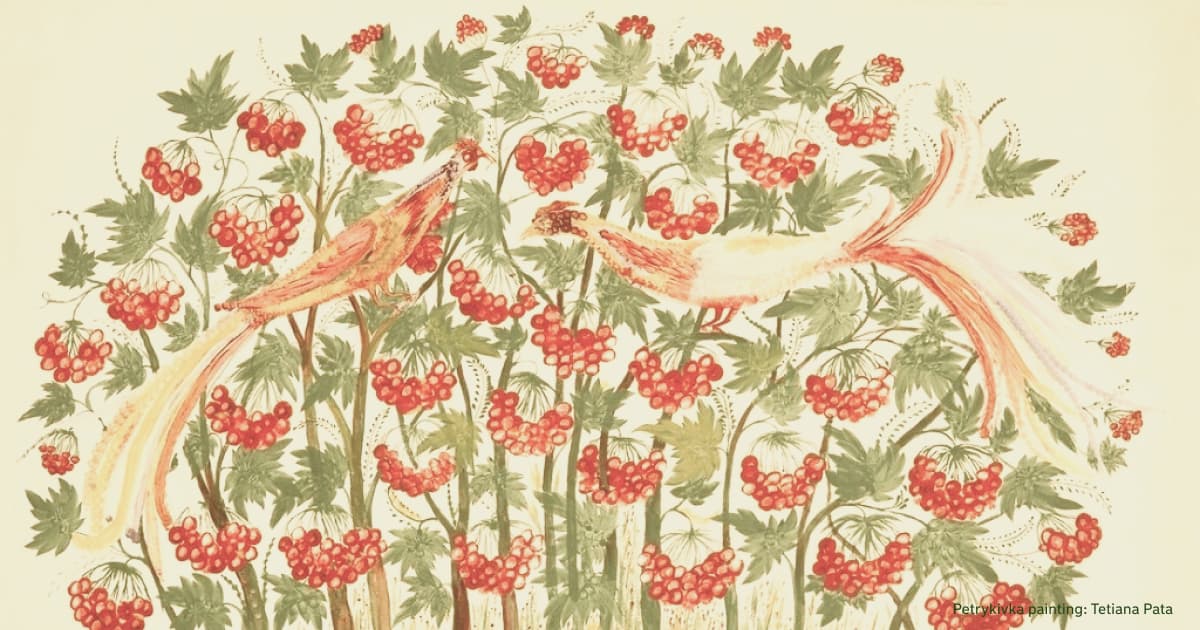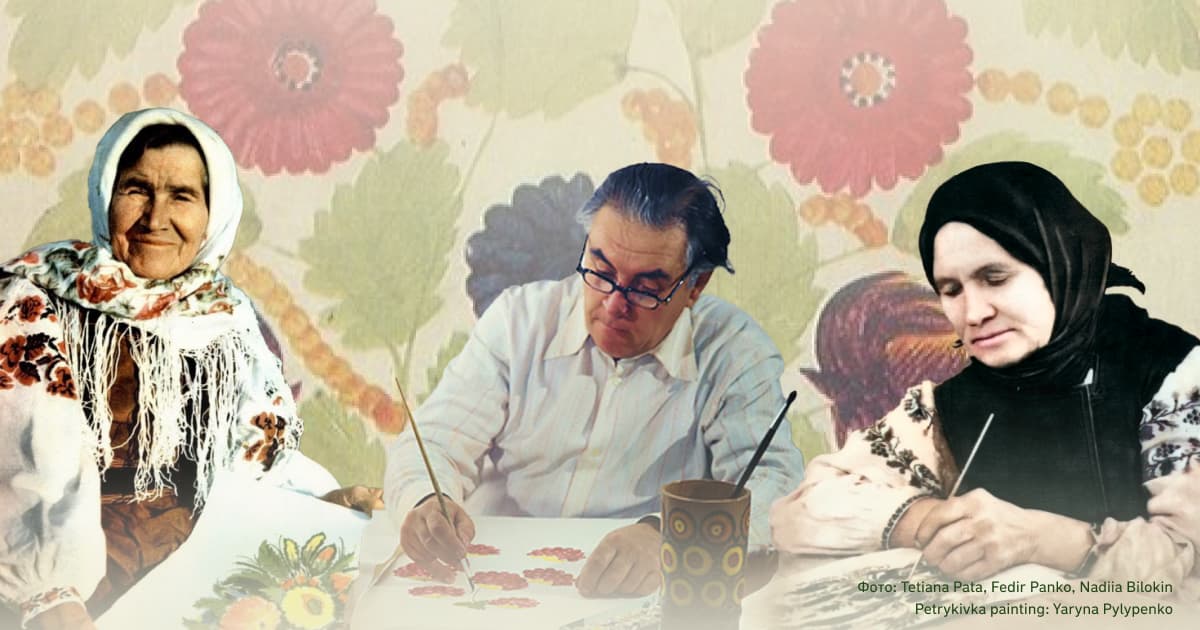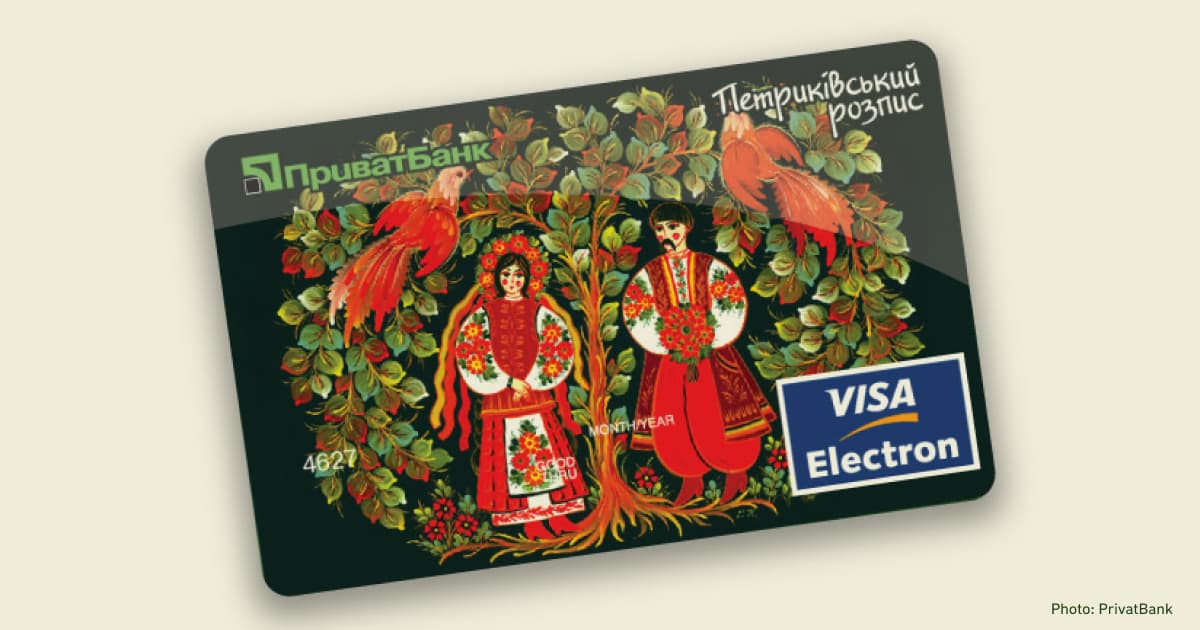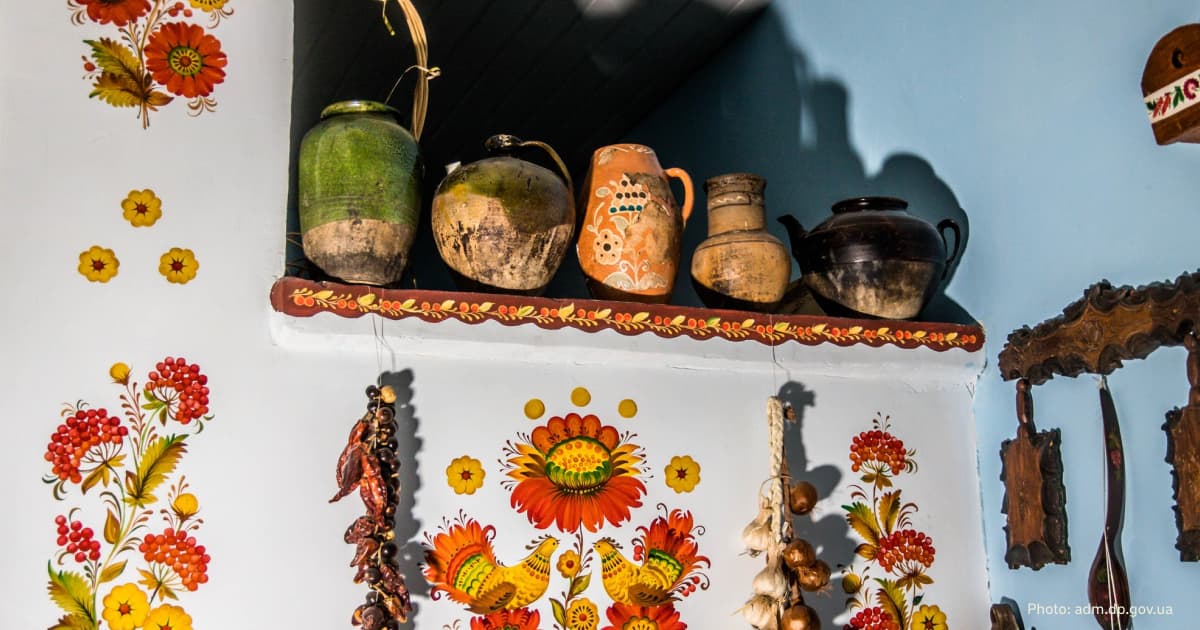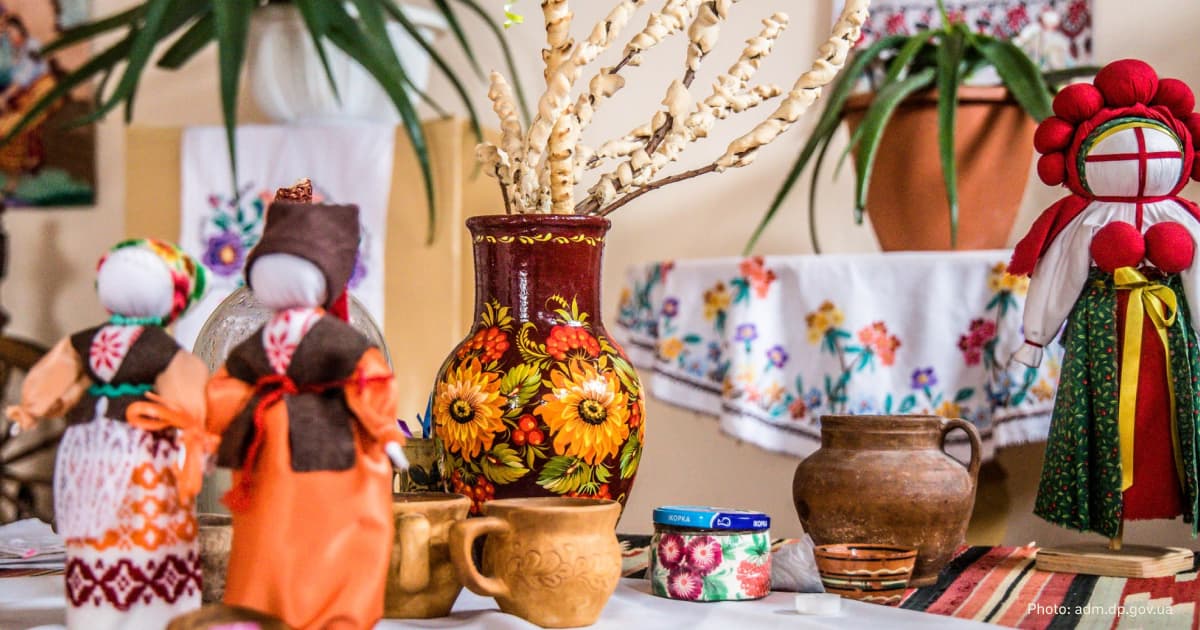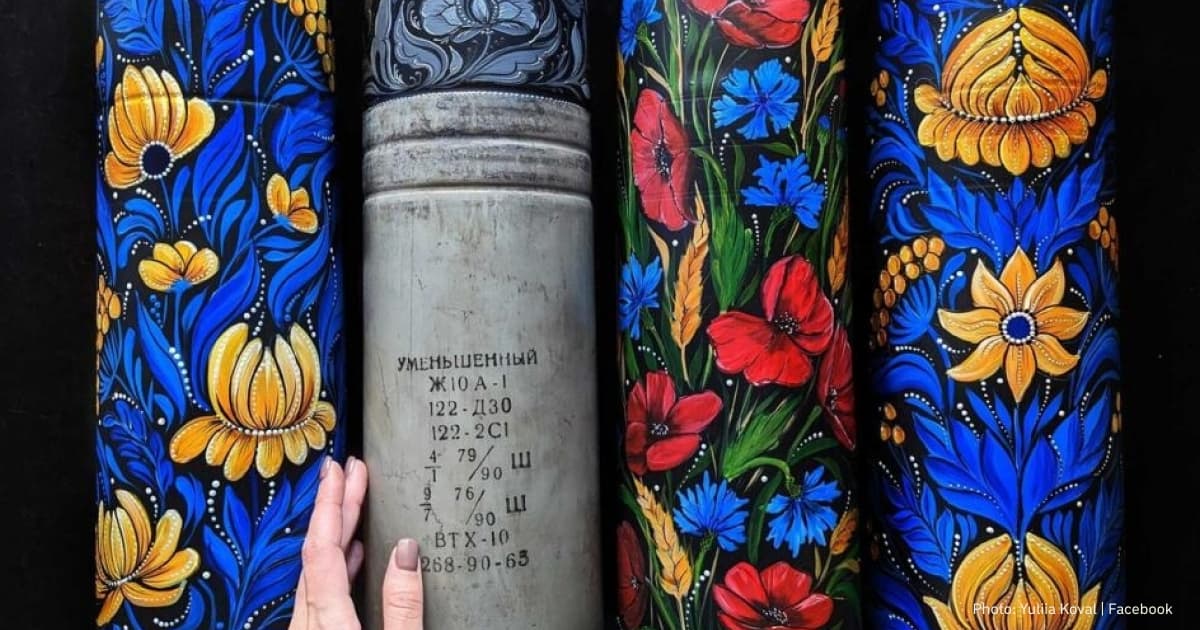Petrykivka painting and Cossack songs: how is the intangible cultural heritage of the Ukrainian South preserved
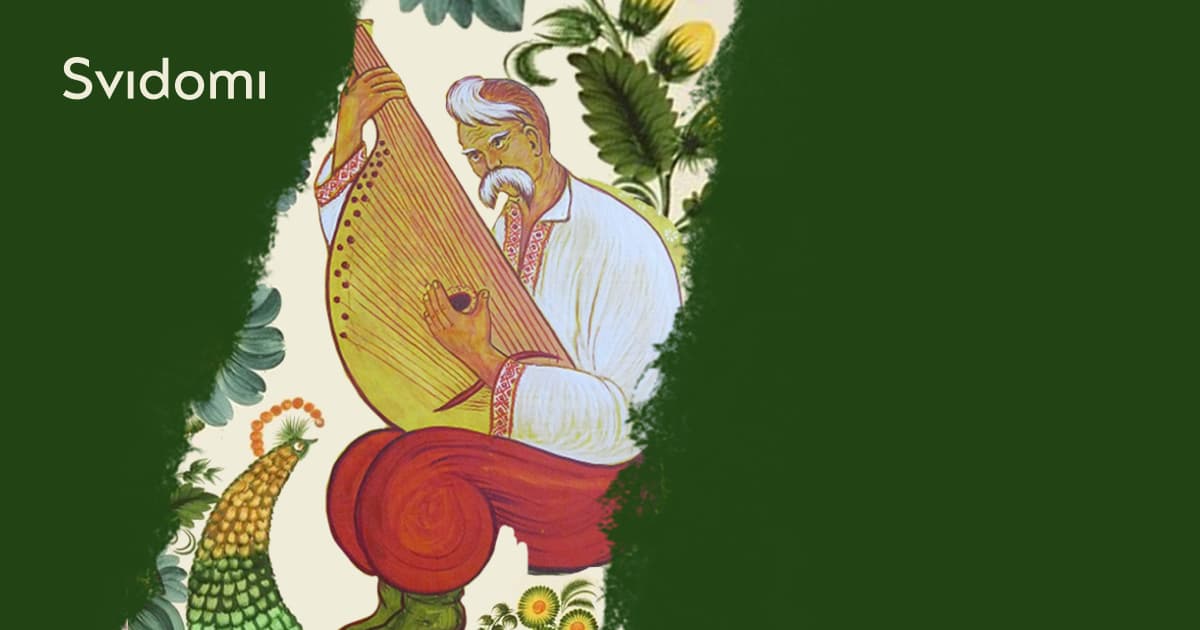
The full-scale invasion has made most Ukrainians interested in their origins, including the intangible cultural heritage of their regions.
Intangible cultural heritage includes oral traditions and forms of expression, performing arts, social practices, rituals and festivities, and traditional crafts. Two elements of the cultural heritage of the South have been inscribed on UNESCO's List of Intangible Cultural Heritage.
Read more about the features of the intangible heritage of the South in the article by Svidomi.
What is the intangible cultural heritage of the South?
Maryna Hrymych, an ethnologist at the Ivan Honchar Museum, tells Svidomi that the formation and development of tangible and intangible culture in the South of Ukraine is linked to the history of the region's settlement.
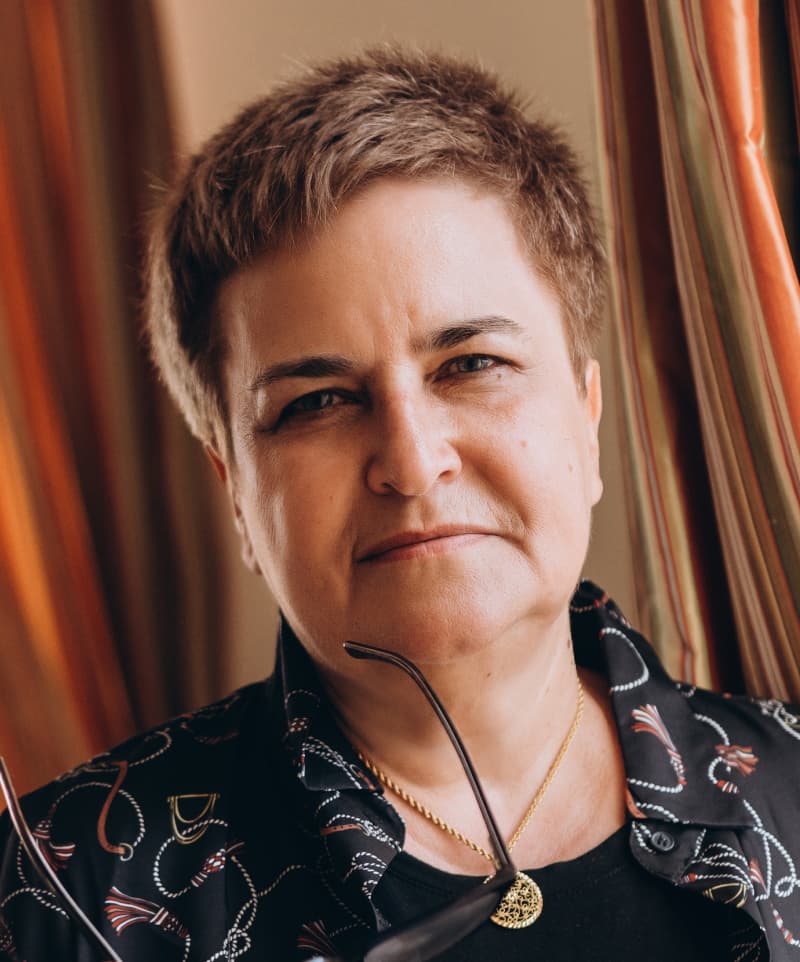
"The South of Ukraine is the 'youngest' Ukrainian territory, formed due to the gradual 'advance' of peasants and agricultural culture into the wild steppe, where various yurts of the Nogai hordes roamed. It all began, as a rule, with the Zaporozhian winter quarters, then the Cossack palanquins and the sloboda (Cossack administrative divisions — ed.), and later, when the [Russian] tsarist authorities initiated land ownership, the so-called lordly villages were formed, as well as separate settlements of Czechs, Serbs, Poles, Germans, Bulgarians, Greeks, Crimean Tatars, Roma, Old Believers, and even Jewish peasants,"
the researcher explains.
In this ethnic diversity, the Ukrainian cultural presence has been the most important and fundamental for centuries.
"As carriers of culture, immigrants brought their customs, songs, rituals, material culture and economic practices. Significant changes have occurred over the centuries. Today, however, the culture of the Ukrainian South is an integral part of the Ukrainian cultural heritage," says Maryna Hrymych.
The researcher explains that there is no cultural continuity or uniformity in the southern regions of Ukraine. Researchers have described the culture of the Ukrainian South as a mosaic.
The ethnomusicologist Illia Fetysov, in particular, when describing the Left Bank Steppe, called it "colourful" and "a mosaic board".
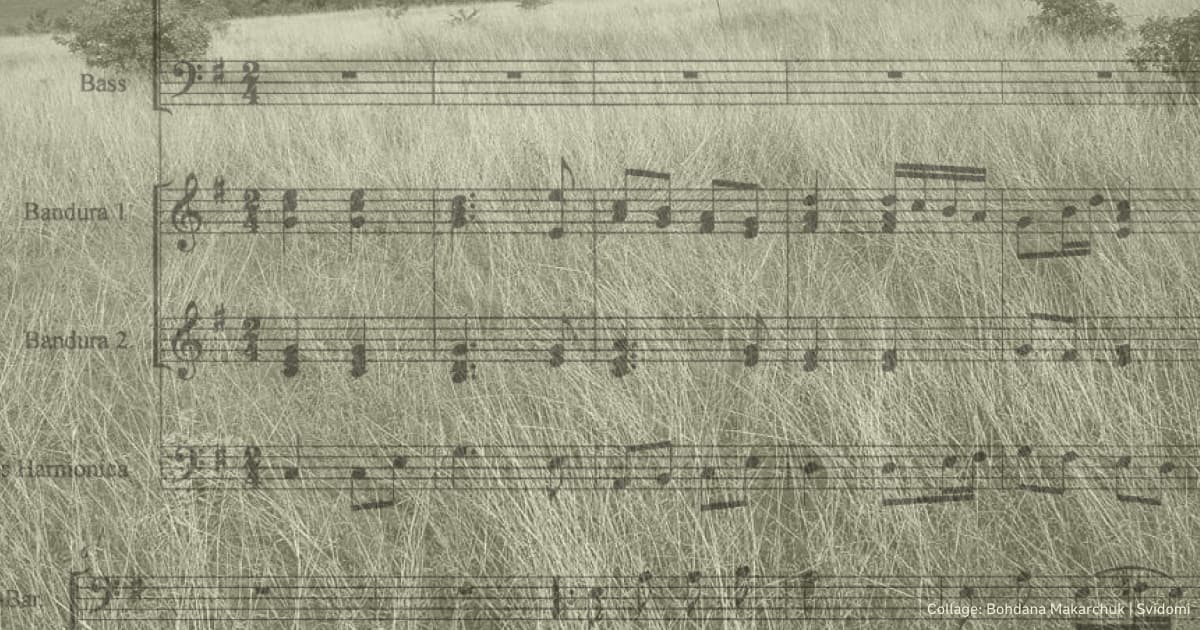
Another characteristic is that the cultural heritage of the South is free of archaism.
"Archaic things, which are incomprehensible in modern times but are preserved by tradition in the 'old' regions (such as Polissia — ed.), do not take root here because they are not functional," says Maryna Hrymych.
Cossack songs as a feature of the intangible cultural heritage of the South
Singing is an important part of the intangible cultural heritage of southern Ukraine. Sometimes, it is called "steppe singing", highlighting the "prolongation of the song".
According to ethnomusicologist Halyna Pshenichkina, Cossack songs were formed as an element of intangible cultural heritage under the influence of the Cossack phenomenon. The peculiarity of Cossack songs is that men mostly performed them. Since 2015, Cossack songs have been included in the UNESCO list of intangible cultural heritage.
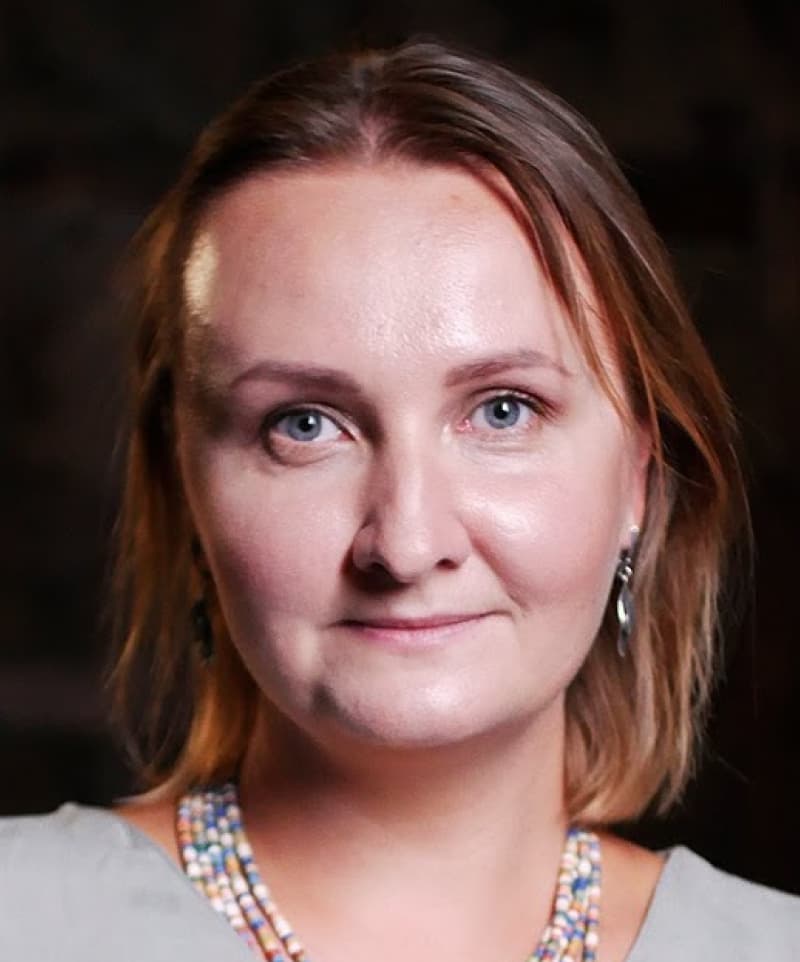
"The Cossacks were an exclusively male environment. Women were not allowed, even though many were married and had families. At the same time, the Cossacks spent most of their time in sieges, battles, training or meetings. That's why Cossack songs are works created by men and performed by men,"
she says.
Cossack songs are performed uniquely, which involves a particular style of male singing — the sound should be chesty and rounded in the register.
"This is a characteristic of the so-called steppe singing. Unlike in Polissia (a natural and historical region in North-Eastern Europe — ed.), where they sing loudly, high and deep, in the South, they sing slowly and long, with a chesty sound," says Halyna Pshenichkina.
Another peculiarity is that a group usually performs Cossack songs. The songs have an emotional tone, as they often describe emotional experiences about family, love or the death of a Cossack.
Some Cossack songs are marching songs, as they were performed during campaigns. They are characterised by a specific tempo and rhythm of performance, which coincides with the rhythm of the marching step. Some of the most famous pieces are "Oh, Do Flourish You Dry Oak Tree", "It's Been Two Hundred Years Since the Cossack Was in Captivity", and "Oh, from Behind the Mountain and from Behind the Estuary".
"Each region had its lyrics, plots and, above all, melodies. The same song doesn't need to sound the same way. You can record many melodic versions of the same story or text," says the researcher.
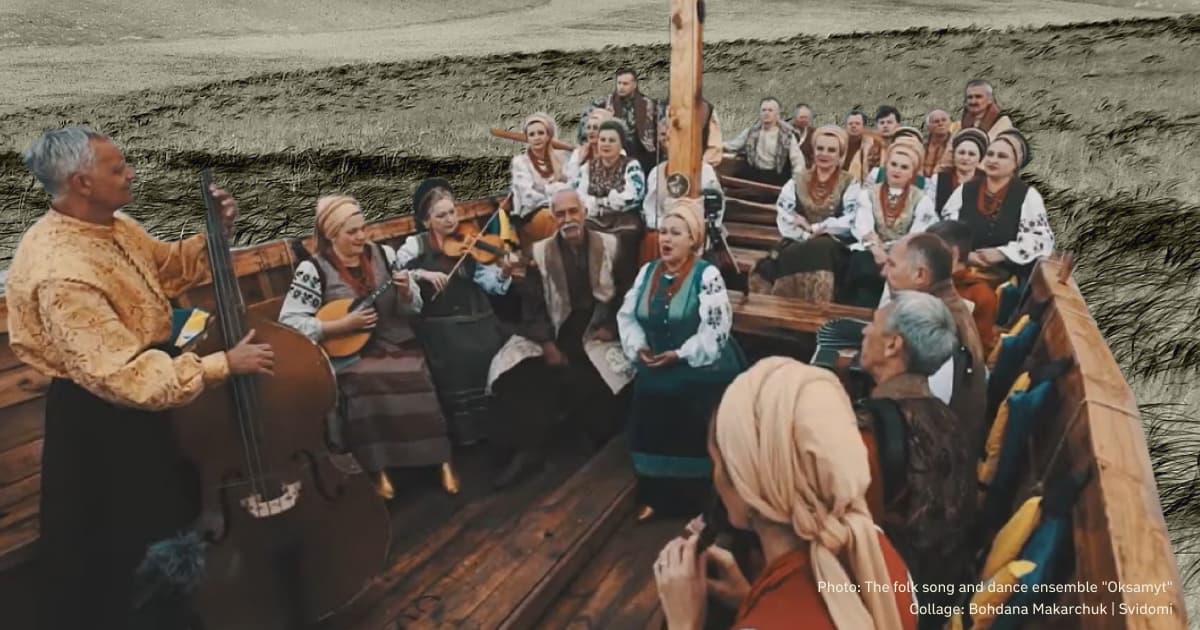
Nowadays, the number of Cossack song performers has decreased because fewer people can remember them and pass them on from generation to generation. However, in some settlements in the south, ensembles that perform Cossack songs have survived.
"There are several such settlements where ensembles are the bearers of Cossack songs. For example, in the village of Bohuslav in the Pavlohrad district, there is a group called Bohuslavochka. In Zhovti Vody, there is the Nakhidka ensemble," says the art historian.
Ukrainian Cossack songs are presented at international UNESCO intangible heritage festivals. One of them, with Ukrainian ensembles, takes place in Klaipėda, Lithuania.
Songs of the Mykolaiv region and their peculiarities
Tetiana Chukhno (Osin), an ethnosinger and researcher at the Ivan Honchar Museum, has been studying the peculiarities of the folk songs of the Mykolaiv region. In her commentary for Svidomi, she says that intangible cultural heritage includes songs local communities recognise as part of their cultural heritage.
They are passed on orally from generation to generation. They are lyrical songs of various themes, folk romances, dance choruses, etc. Like that of the South, the folklore of the region has been shaped by several factors. The south of the Mykolaiv region was mostly part of the Crimean Khanate, and the north belonged to the Zaporozhian Sich.
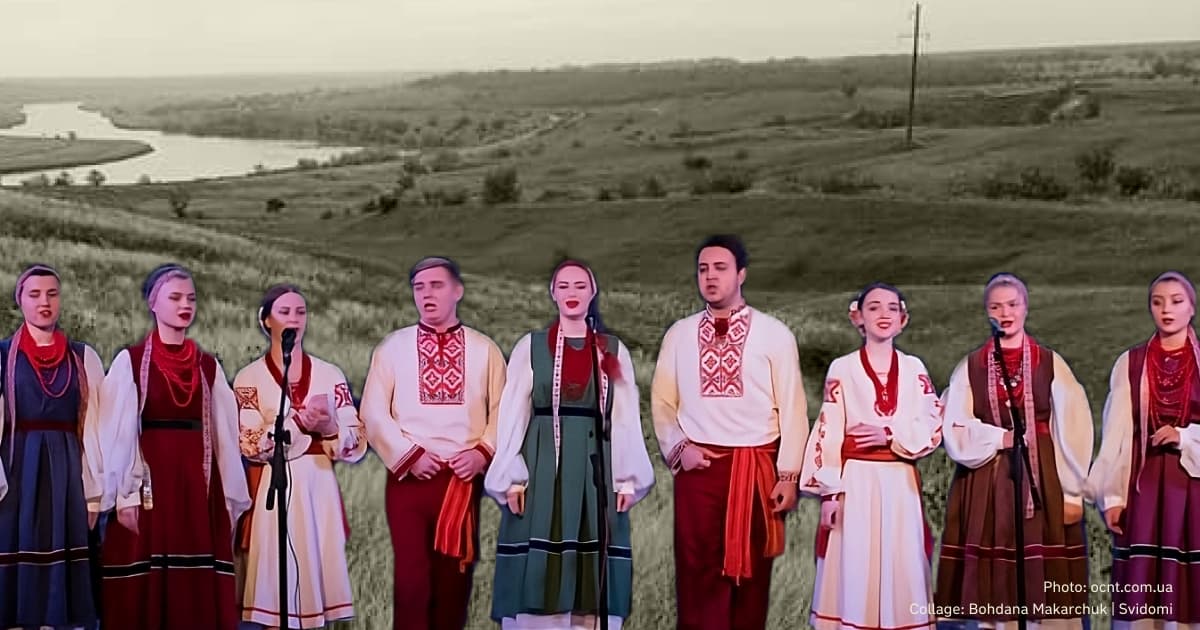
As Tetiana Chukhno (Osin) explains, the Mykolaiv region remained sparsely populated until the end of the eighteenth century. After the Russo-Turkish War, Moldovans and people from Russia and Belarus began to settle in the area. Later, Germans, Bulgarians and Jews began to settle in the region. Seasonal workers who came to work in agriculture also significantly impacted the development of Black Sea folklore.
The late settlement and the mixed ethnicity of the settlers were among the main reasons for the low interest of folklorists and ethnomusicologists in these areas, says the ethnosinger.
"Today, in the villages of the Mykolaiv region, late lyrical songs, romances, songs of literary origin and original songs are most often sung. There are slightly fewer lyrical songs from the earlier period, including recruitment songs, soldiers' songs, ballads, etc.," says Tetiana Chukhno (Osin).
The oldest recordings of the region's musical folklore are kept at the Mykolaiv Regional Centre for Folk Art. Samples of songs by Bulgarians who lived in the region are kept in the Mykolaiv Museum of Local Lore.
Among the recordings kept at the Mykolaiv Regional Centre for Folk Art are the lyrical song "From Behind the Stone Mountain" from the village of Ulianivka, Novododesa district; carols from the village of Ulianivka, Novododesa district; and an album of wedding songs from the village of Parutyne, Ochakiv district.
"Many recordings [of songs] have been lost due to the lack of media on which they were recorded. Often, the same cassette was recorded several times. The recordings were written down during the expedition, and then the same cassette was used again. Many collectors did not understand that the notes are often not enough to understand how the song should sound, which performance characteristics are typical for the style of the region," says the ethnosinger.
Petrykivka painting
The Petrykivka painting is a patterned folk painting that originated in the village of Petrykivka in the Dnipropetrovsk region. This painting has been on the UNESCO Intangible Heritage List since 2013.
Floral motifs predominate in Petrykivka painting. Sometimes, floral patterns are combined with images of people, birds and animals on a white background. The peculiarity of Petrykivka painting is that the whole pattern seems to unfold in one plane and has a superficial appearance. The ornament is built around one or more stems to which all the elements of the central part of the ornament are attached. All ornaments are made with particular types of strokes, and the paints and tools used were of natural origin.
Women were usually involved in this work. People used to decorate their houses with Petrykivka paintings.
Even though Petrykivka painting is considered folk art, some famous artists worked in this style. Some of them are Fedir Panko, Nadiia Bilokin, Tetiana Pata and Yaryna Pylypenko.
The Petrykivka ornament has become an artistic trademark of Ukraine. Petrykivka's floral patterns have been used to design bank credit cards in monumental art at various times. In the context of a full-scale invasion, Petrykivka paintings were decorated with used shell casings raffled off at charity events to support the Ukrainian Defence Forces.
How can intangible heritage be preserved in a full-scale war?
Tetiana Chukhno (Autumn) believes that more people become interested in their origins with a full-scale invasion. They reconsider their attitude to culture, language and historical events. This sparks an interest in cultural heritage.
"In the autumn of 2023, the team of the Ivan Honchar Museum and I organised a concert of songs from the Ukrainian South. We couldn't fit everyone in the hall. We repeated the concert a little later, but the situation repeated itself. Because of Russian propaganda, the cultural component of the steppe has always been underestimated and not given due attention, but now society is beginning to realise its mistakes," she says.
Maryna Hrymych adds that the Ukrainian steppe should become an intangible heritage site as a historical and cultural landscape. In particular, the Lower Dnipro should become a vital site of southern Ukraine's historical and cultural heritage, and researchers should study in detail the traditions of Dnipro pilotage (from the word pilot — a person who steers a boat — ed.).
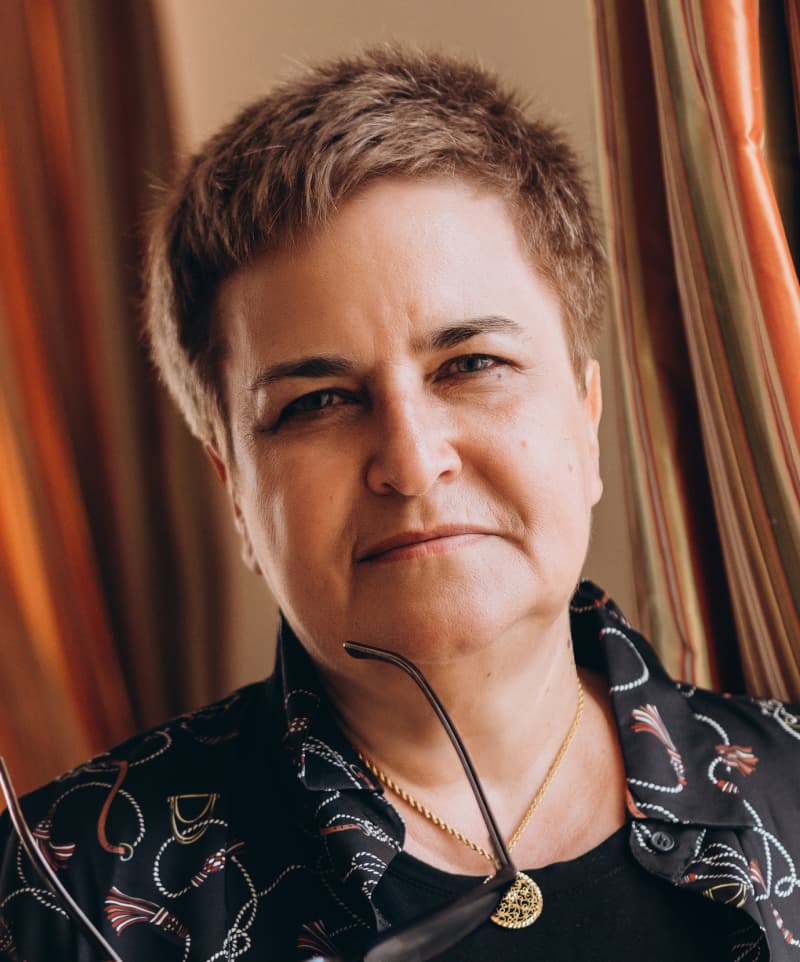
"It is worth considering researching the Chumak and Cossack routes to the Crimea, which ran through the Ukrainian steppe. This should also become a source of national pride for Ukrainians,"
she says.

